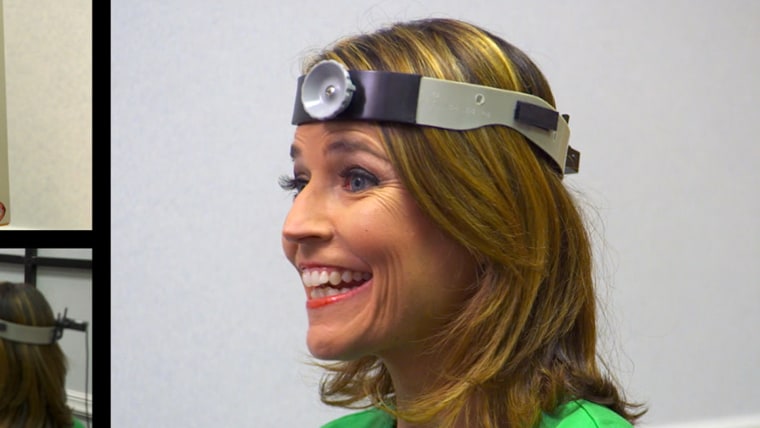Savannah Guthrie regularly shows up to work with mysterious bruises she can’t explain. Does she have some sort of iron deficiency? Is she a secret ninja in her non-Studio 1A life?
Nah. She’s just a klutz.
“You’ll come in and (we’ll) say, what’s that bruise?” Al Roker said this morning on TODAY to Guthrie, who admitted that she never has any idea how she got most of them.
“I just forget because it happens all day long,” she said. (Ah, but the Internet never forgets – for televised proof, see Guthrie compete in a mini-Tough Mudder on the Plaza in May.)
Guthrie reported on the science of clumsiness this morning, citing a 2007 Dutch report that essentially found that natural-born walking disasters really do exist – one out of every 29 people is 50 percent more likely to do something clumsy than regular, non-accident-prone people.
Today, Dr. Buz Swanik and his team of engineers at the University of Delaware are investigating what’s happening in the brains of clumsy people.
“They can’t create a plan for what’s going to happen next, and it could be within one-tenth or two-tenths of a second, and you’re exposed, to whatever is around you that could hurt you,” Swanik told TODAY.
And that fraction of a second is enough time to drop something, crash into something, fall into something – you get it. Kevin Doell is currently experiencing life as a clumsy person – he’s a professional hockey player recovering from a concussion, and one of the side effects he’s experiencing is klutziness.
“I felt myself being a little clumsy, dropping things,” Doell says. “My eyes aren’t catching up to what I want to do, or something.”
After two months of physical therapy with specialist Jim Buskirk, Doell is near full recovery. Buskirk thinks that the same therapy that helped Doell could help the everyday accident-prone, like Guthrie.
On camera, Buskirk gave Guthrie a series of five tests, measuring things like vision, equilibrium and spatial awareness. And she failed every test – every single one.
“This is an equilibrium and balance system processing problem, where when you’re trying to do more than one thing at a time and things aren’t being processed 100 percent correctly, and it manifests itself with a physical anomaly causing you to just be clumsy,” Buskirk told Guthrie. “Certainly, now I have enough of a measure that I could design a rehabilitative program for you –“
Guthrie interrupted, “So I could be cured?”
“With you we don’t worry so much,” Buskirk says. “If your profession involved climbing up ladders and doing things on scaffolds, I’d be a lot more concerned and a lot more worried.”
In other words – Guthrie really is an accident-prone person. Back in the studio Thursday morning, she held aloft two single-spaced pages detailing what’s scientifically wrong with her and said Buskirk told her if she wanted to "cure" her clumsiness, it would take eight to 10 weeks of work. But like many of us suffering from this affliction, she has developed her own theory on what’s causing her clumsiness.
“What I think is that I’m thinking really deep and important thoughts, and therefore I’m really not watching where I’m going,” she said.
“You keep thinking that,” said Matt Lauer, giving her a sad little pat on the shoulder.
